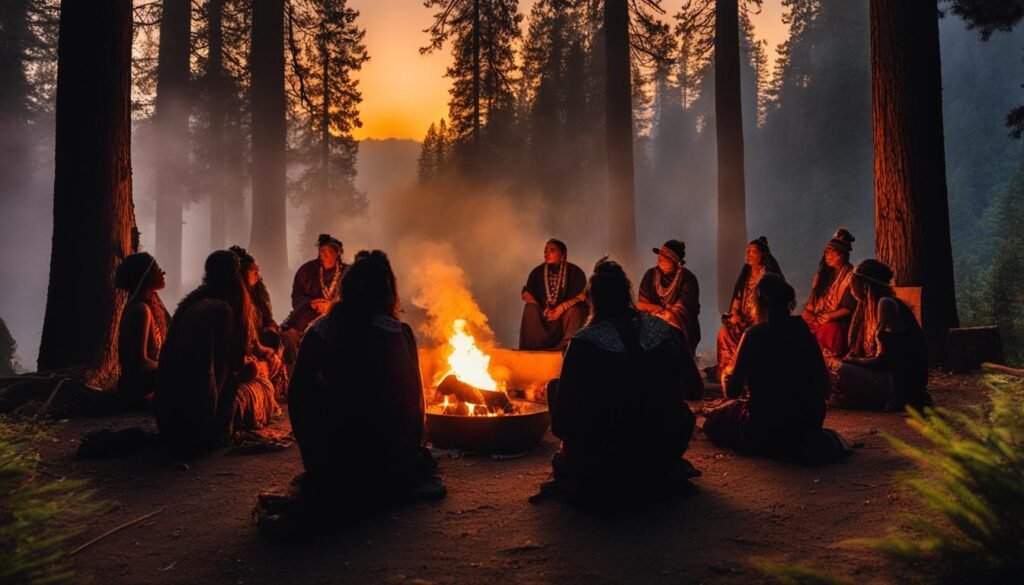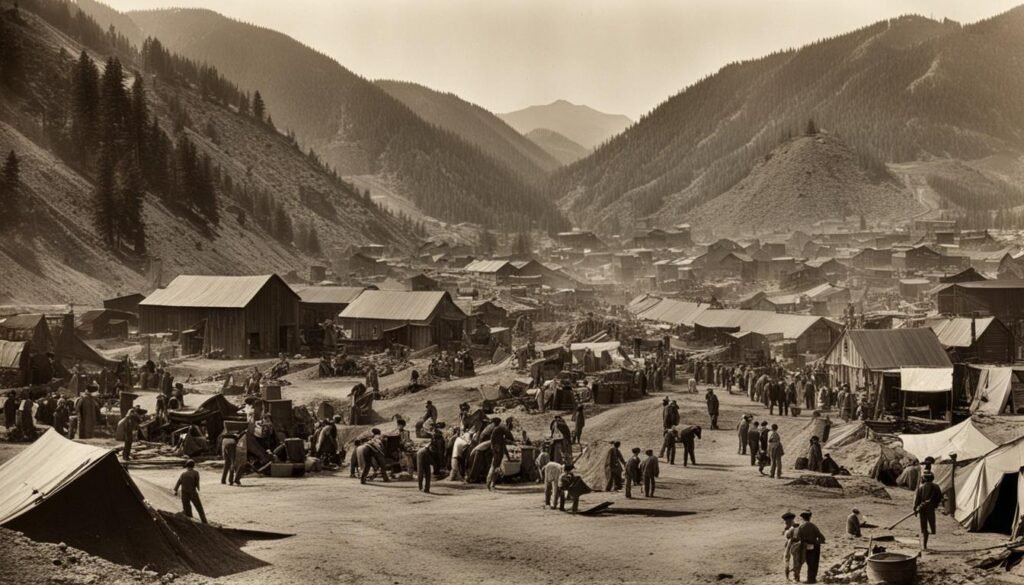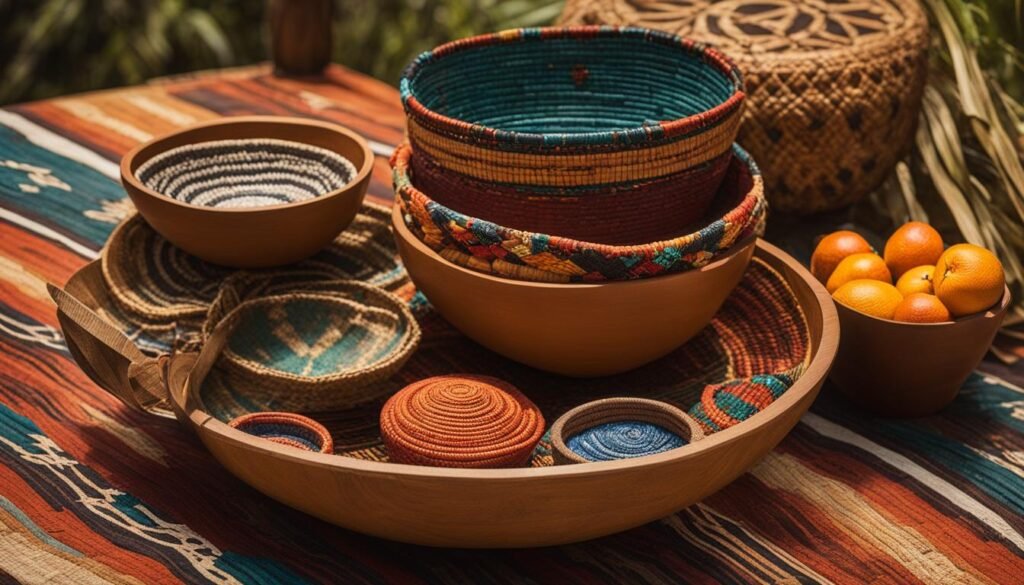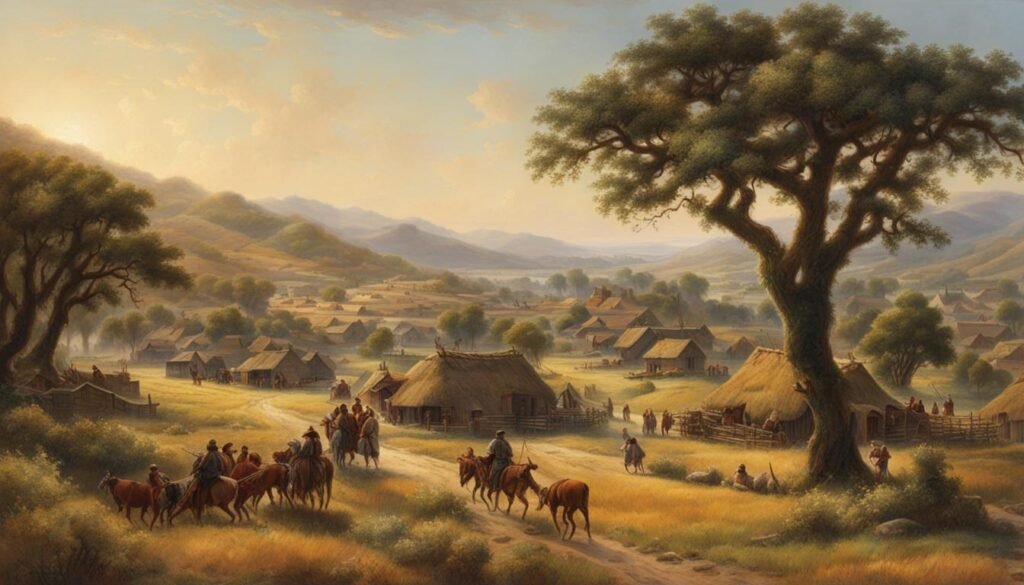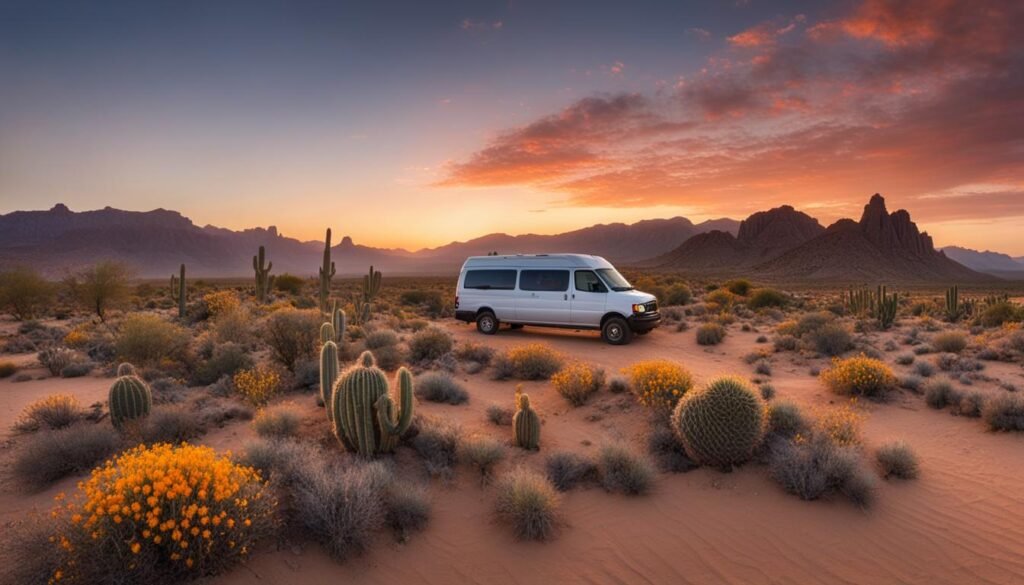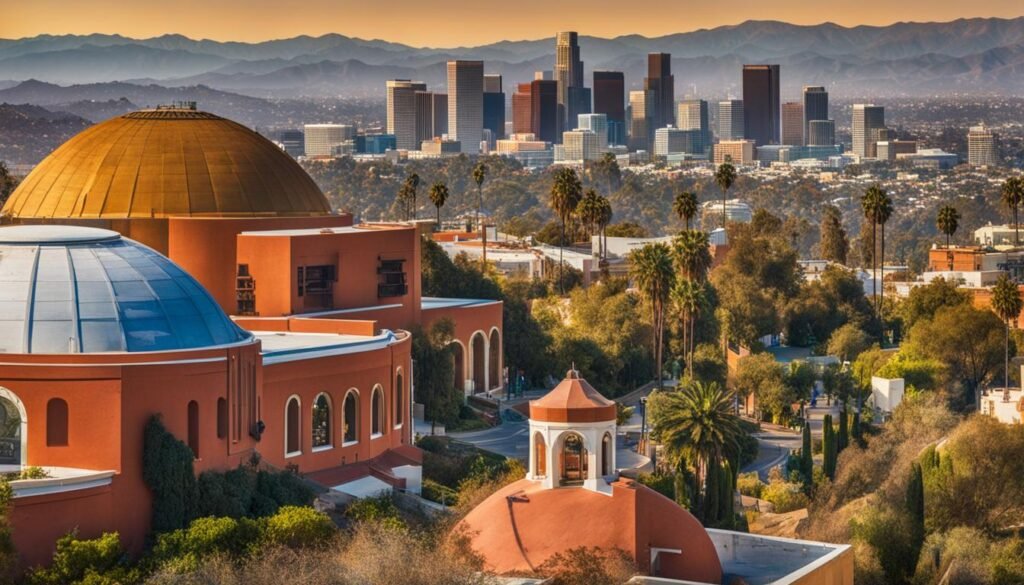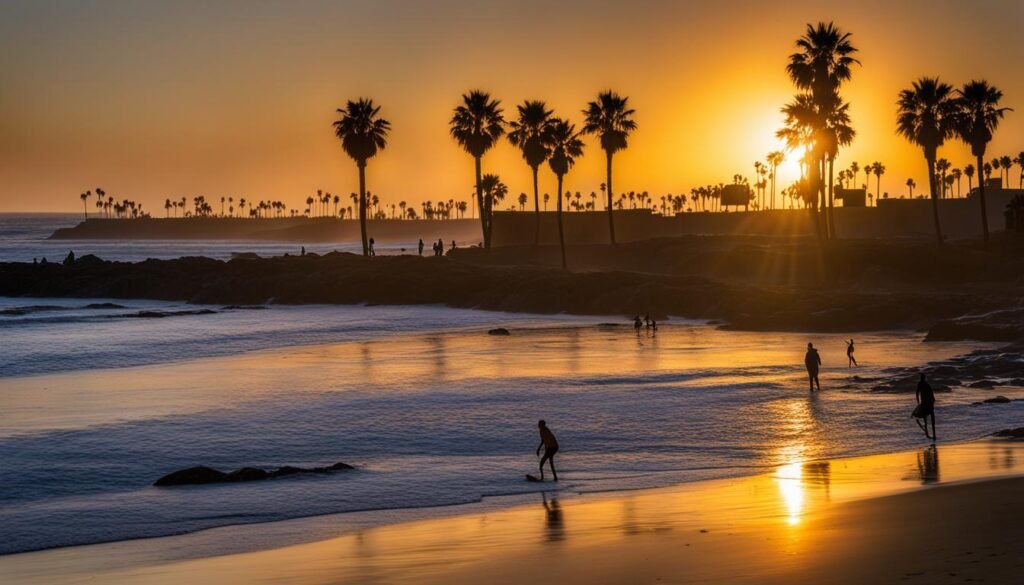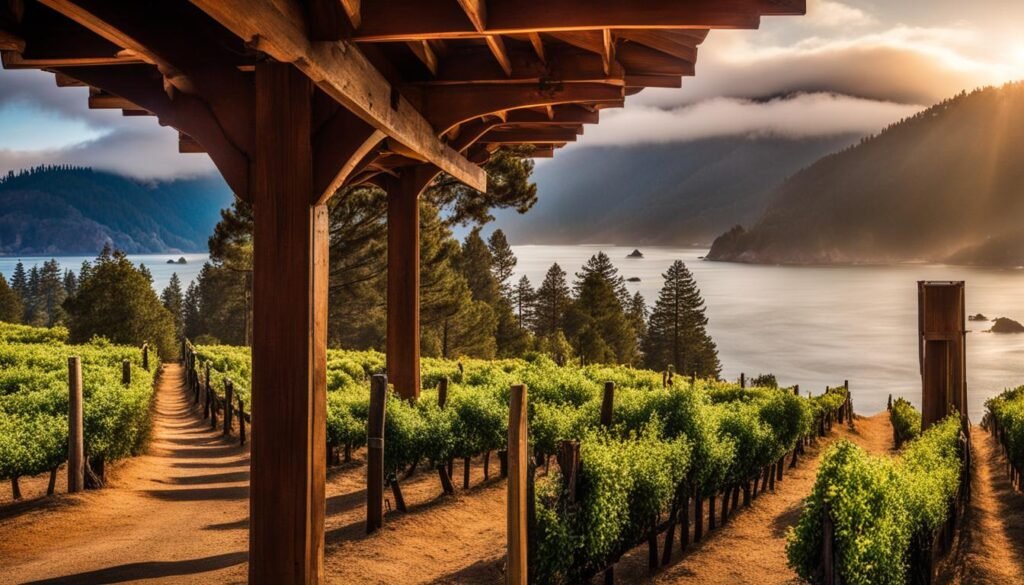California is a land of rich history and diverse cultures, and at the heart of this vibrant tapestry are the Native American tribes that have called this place home for thousands of years. From the expansive deserts of the south to the majestic redwood forests of the north, the tribes of California have thrived in harmony with the land, carving out unique cultures and customs along the way.
The story of the Native peoples of California is a tale of resilience, strength, and deep-rooted connection to the land. Despite the hardships they have faced throughout history, these tribes have persevered, preserving their rich heritage and traditions for future generations to appreciate and embrace.
Key Takeaways:
- California is home to diverse Native American tribes with unique cultures and traditions.
- These tribes have a deep connection to the land and have thrived in different ecological zones.
- The arrival of Spanish colonizers had a profound impact on the indigenous tribes.
- Tribal museums and cultural centers offer an opportunity to learn about the rich history and culture of the tribes.
- Native American pow wows and cultural events showcase the vibrant traditions of the tribes.
Tribal Communities in California
California is home to a diverse array of indigenous tribes, each with its own unique culture and traditions. With more than 100 federally recognized tribes, the state boasts a rich tapestry of tribal communities that have shaped the history and diversity of California.
Some of the notable tribes in California include the Tolowa, Shasta, Karok, Yurok, Hupa, Chilula, Chimarike, Wiyot, Modoc, Achumawi, Atsugewi, Bear River, Maidu, Yokuts, and Costanoan, among many others. These tribes have their own governance systems, languages, and social structures, all contributing to the diverse fabric of California’s tribal communities.
Throughout history, these tribes have played a significant role in preserving their cultural heritage and passing down traditions from one generation to another. They have a deep connection to the land and continue to uphold their sacred relationship with their ancestral territories.
Exploring the rich cultural heritage of California’s native tribes offers a glimpse into the profound history and resilience of these communities. From traditional ceremonies and storytelling to skilled craftsmanship in art and music, the tribal communities in California carry on their profound legacy.
To gain a deeper understanding of the tribes’ cultural significance, one can visit tribal museums and cultural centers that showcase artifacts, art, and exhibits that tell the stories of the indigenous peoples of California. It is through these experiences that visitors can truly appreciate the richness and diversity of the state’s tribal communities.
Traditional Lifeways
The traditional lifeways of California tribes were deeply intertwined with the land and its resources. These indigenous communities relied on hunting, fishing, and gathering for their sustenance, utilizing the abundant natural resources that California has to offer. Staples in their diet included acorns, salmon, berries, and nuts, which were harvested with great care and respect. The tribes developed sophisticated techniques for basket weaving, pottery making, and carving, showcasing their mastery of these crafts.
California tribes had a profound reverence for nature and practiced sustainable resource management long before it became a widely recognized concept. Their cultural practices, such as rituals and ceremonies, were rooted in maintaining harmony with the natural world around them. These practices ensured the continued abundance of resources and the preservation of the delicate ecosystem they relied upon.
Despite the challenges faced by the tribes throughout history, they have managed to hold onto their rich cultural traditions and assert their tribal sovereignty. The resilience and determination of the tribes have allowed them to maintain their unique identity and connection to the land.
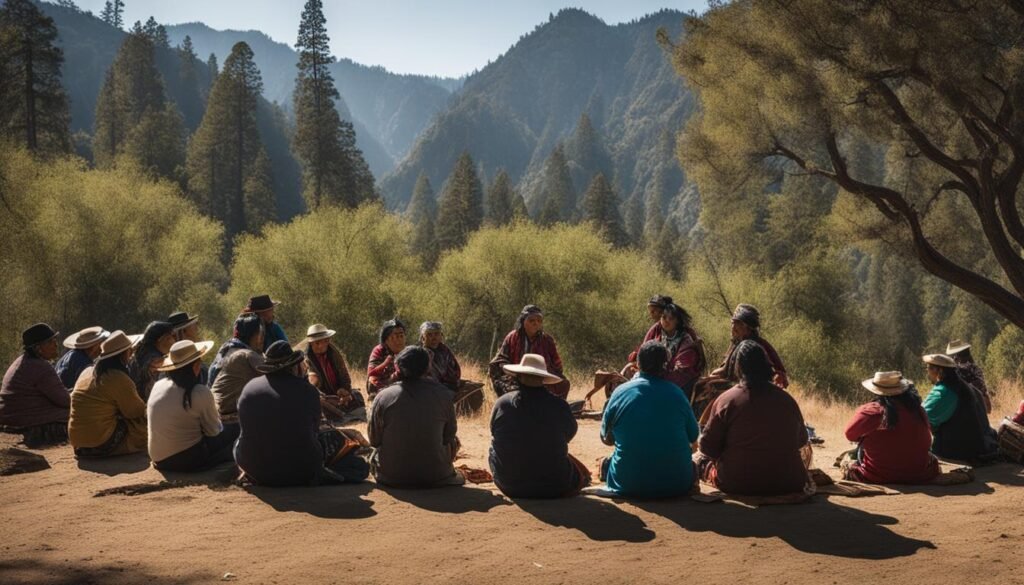

Impact of Spanish Colonization
The arrival of Spanish colonizers in California had a profound impact on the indigenous tribes. The Spanish established missions along the coast, which were intended to convert and assimilate the native population.
The missions introduced a new way of life and disrupted the traditional lifeways of the tribes. The native people were subjected to forced labor and cultural suppression. The mission system also brought diseases that decimated the Native American population.
Despite the hardships, the tribes in southern California, such as the Chumash, Cahuilla, and Kumeyaay, have preserved their cultural heritage and continue to maintain a strong presence in the region.
Tribal Museums and Cultural Centers
California is home to a diverse range of tribal museums and cultural centers that offer a fascinating insight into the rich history and culture of indigenous tribes. These establishments provide visitors with a unique opportunity to learn about the traditions, customs, and lifeways of the California tribal communities.
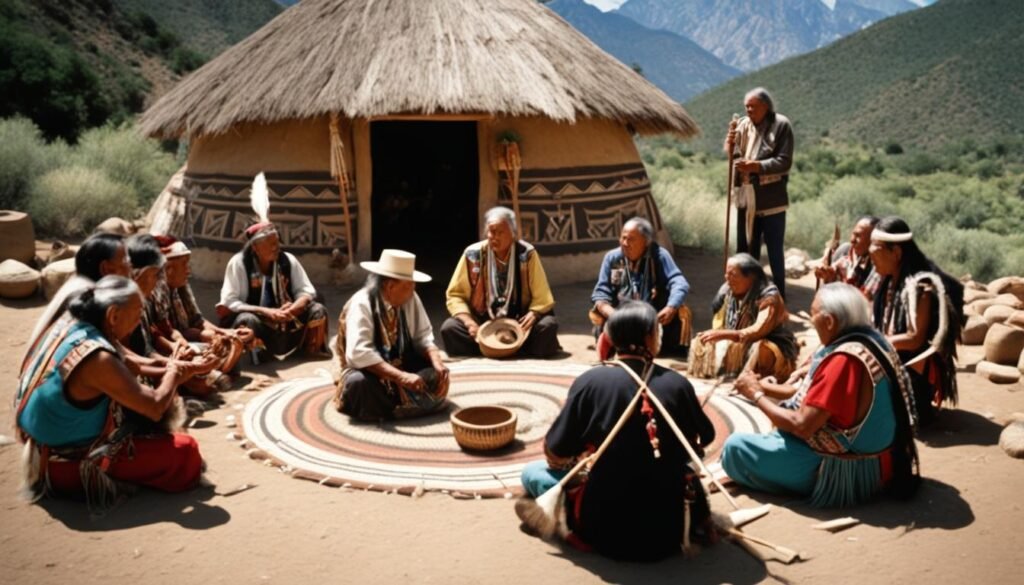

At the Agua Caliente Cultural Plaza in Palm Springs, visitors can explore exhibits featuring artifacts, artworks, and historical documents that highlight the heritage of the Agua Caliente Band of Cahuilla Indians. This vibrant cultural center also hosts events, workshops, and performances that showcase the living traditions of the tribe.
The Barona Cultural Center & Museum, located in San Diego County, offers a comprehensive exploration of the Kumeyaay people’s history and culture. The museum’s exhibits include traditional tools, pottery, and intricate basketry. Visitors can also participate in interactive exhibits and educational programs that promote a deeper understanding of the Kumeyaay’s way of life.
The Malki Museum near Banning focuses on the cultural heritage of the Cahuilla, Serrano, and Tongva tribes. This unique institution features an extensive collection of artifacts, photographs, and traditional art, allowing visitors to learn about the indigenous peoples’ past and present. The museum also organizes cultural events and workshops to engage visitors with the tribes’ customs and practices.
These tribal museums and cultural centers not only preserve and showcase the indigenous tribes’ rich history but also serve as important educational and cultural hubs for both tribal members and the general public. Through their exhibits and programs, they help foster awareness, appreciation, and respect for California’s tribal communities.
Outdoor Experiences on Tribal Lands
When it comes to exploring the natural beauty of California, the tribal lands offer a unique and enriching experience. From breathtaking landscapes to cultural immersion, visitors have the opportunity to delve into the rich heritage of California’s indigenous tribes.
Guided Canoe Tours on the Klamath River
One remarkable outdoor experience is taking a guided canoe tour on the Klamath River with the Yurok Tribe. As you paddle along the waterway, you’ll witness the stunning scenery and learn about the Yurok people’s deep connection to the river. Knowledgeable guides will share captivating stories and insights into their history, traditions, and the significance of this sacred river in their culture.
Hiking in the Indian Canyons
The Indian Canyons, owned and managed by the Agua Caliente Band of Cahuilla Indians, offer an opportunity for hiking enthusiasts to immerse themselves in the breathtaking landscapes of Palm Springs. Explore the stunning canyons, witness cascading waterfalls, and marvel at the diversity of flora and fauna that thrive in this natural oasis. Along the way, learn about the Cahuilla people’s deep connection to the land and gain an appreciation for their sustainable land management practices.
Guided Tours, Storytelling, and Cultural Demonstrations
Visitors to tribal lands can also engage in guided tours, where knowledgeable community members share their insights and stories about the tribes’ relationship with the environment. Experience the magic of traditional storytelling, as tribal members pass down their ancestral knowledge and cultural traditions. Additionally, cultural demonstrations, such as traditional dance performances and crafts, provide a unique opportunity to witness and participate in the vibrant living traditions of California’s indigenous tribes.
Exploring the tribal lands allows you to truly immerse yourself in the culture, history, and natural beauty of California’s Native American communities. It’s a chance to connect with the land and gain a deeper understanding of the tribes’ profound relationship with their environment.
Pow Wows and Cultural Events
Pow Wows are intertribal gatherings where indigenous tribes in California come together to celebrate their rich cultural heritage through dance, music, and storytelling. These vibrant events showcase the diversity and traditions of the Native American nations in California.
California is proud to host several notable Pow Wows, including the Morongo Thunder & Lightning Pow Wow and the Chumash Pow Wow. These events offer a unique opportunity for visitors to immerse themselves in the tribal culture and experience the energy and beauty of traditional dances.
During Pow Wows, attendees can witness intricate dance performances, adorned with colorful regalia that reflect the unique traditions of each tribe. The rhythmic beat of live drumming enlivens the atmosphere, creating a sense of connection and unity among participants and spectators.
Storytelling is another important element of Pow Wows, where elders pass down the wisdom, values, and history of their tribes through captivating narratives. These stories, deeply rooted in the indigenous tribes of California, preserve and share the ancestral knowledge for future generations.
Participating in a Pow Wow is an unforgettable experience that allows individuals to engage with the Native American cultures that have shaped California’s history. It provides a glimpse into the traditions, customs, and community spirit of the indigenous tribes in the state. Attending a Pow Wow offers a unique moment to appreciate and honor the heritage of the native peoples and learn about their continued presence and contributions.
Be sure to mark your calendar and explore the Pow Wows and cultural events hosted by the diverse Native American nations in California. These gatherings offer a truly authentic and enriching experience, showcasing the resilience and vitality of the indigenous tribes.
From traditional dances to captivating storytelling, Pow Wows reflect the vibrant cultural tapestry of California’s tribal nations. Don’t miss the chance to witness the unity, pride, and creativity on display at these extraordinary events.
Image: Pow Wow Dance
Conclusion
California’s tribes have a deep-rooted culture and history that spans thousands of years. The indigenous tribes in California have faced numerous challenges throughout history, including colonization and cultural suppression. Despite these obstacles, they have managed to preserve their heritage and maintain a strong sense of identity.
The cultural practices, traditions, and connection to the land are integral to California’s diverse cultural fabric. From their sustainable resource management to their intricate basket weaving and pottery making, the tribes’ contributions are significant and cherished.
To gain a deeper appreciation for the rich and diverse heritage of the indigenous tribes in California, I encourage you to visit tribal museums, attend Pow Wows, and explore tribal lands. These experiences offer a glimpse into the fascinating California tribal culture and provide an opportunity to interact with the vibrant communities that continue to thrive today.
FAQ
How many tribes are federally recognized in California?
There are more than 100 federally recognized tribes in California.
Which tribes are part of the California tribal communities?
The tribal communities in California include the Tolowa, Shasta, Karok, Yurok, Hupa, Chilula, Chimarike, Wiyot, Modoc, Achumawi, Atsugewi, Bear River, Maidu, Yokuts, Costanoan, and many more.
What was the traditional way of life for California tribes?
The traditional lifeways of California tribes were closely tied to the land and its resources. They relied on hunting, fishing, and gathering for their sustenance.
How did Spanish colonization impact the indigenous tribes in California?
The arrival of Spanish colonizers in California had a profound impact on the indigenous tribes. The native people were subjected to forced labor and cultural suppression.
Are there any tribal museums and cultural centers in California?
Yes, there are various tribal museums and cultural centers in California that provide visitors with an opportunity to learn about the rich history and culture of the indigenous tribes.
What can visitors do on tribal lands in California?
California’s tribal lands offer unique outdoor experiences for visitors, including guided canoe tours and hiking in the Indian Canyons owned by the Agua Caliente Band of Cahuilla Indians.
What are Pow Wows and cultural events?
Pow Wows are intertribal gatherings where Native American tribes come together to celebrate their culture through dance, music, and storytelling.
What is the significance of California’s tribes in the state’s culture?
California’s tribes have a deep-rooted culture and history that spans thousands of years. Despite the challenges they have faced, the tribes have managed to preserve their heritage and maintain a strong sense of identity.

